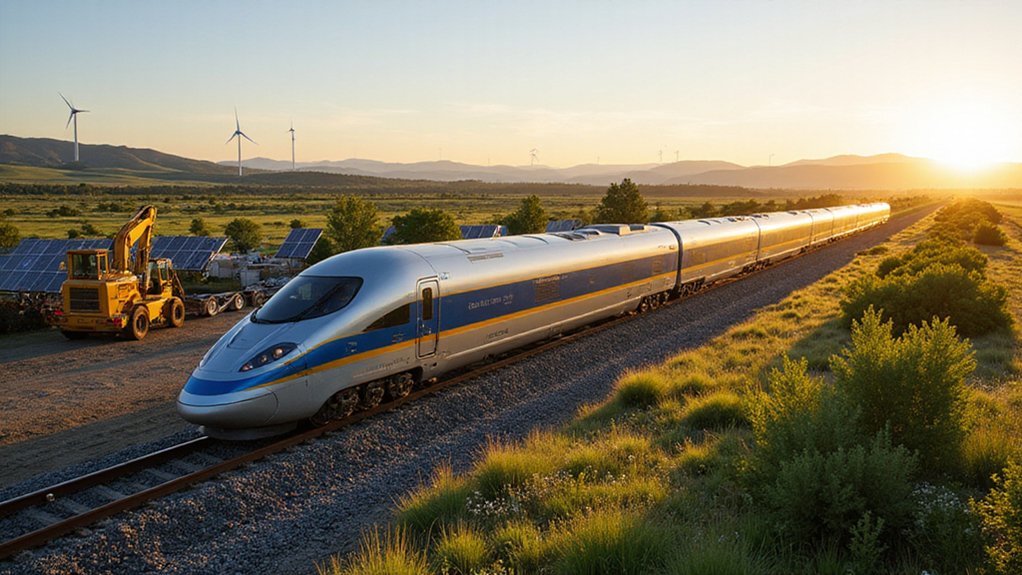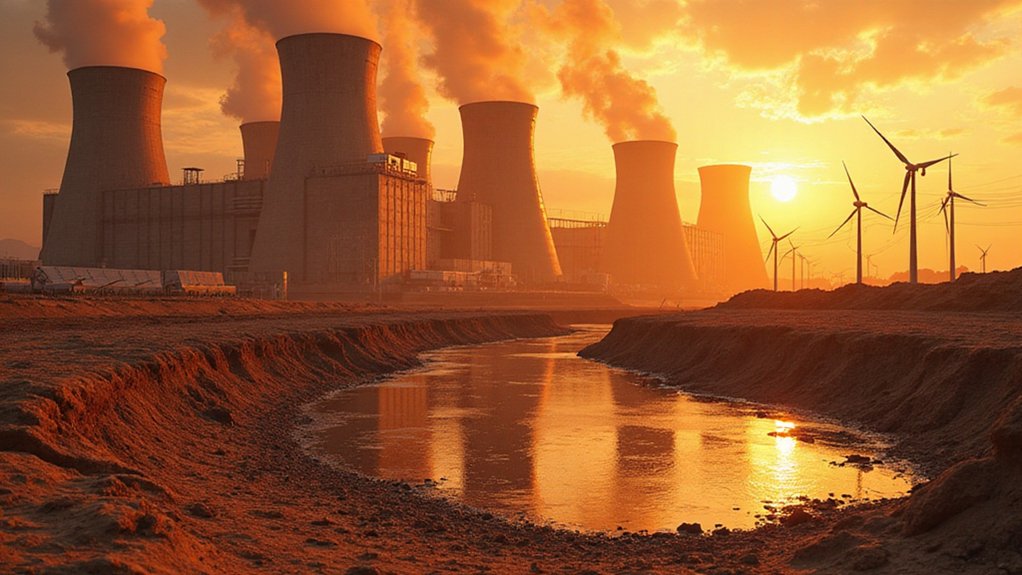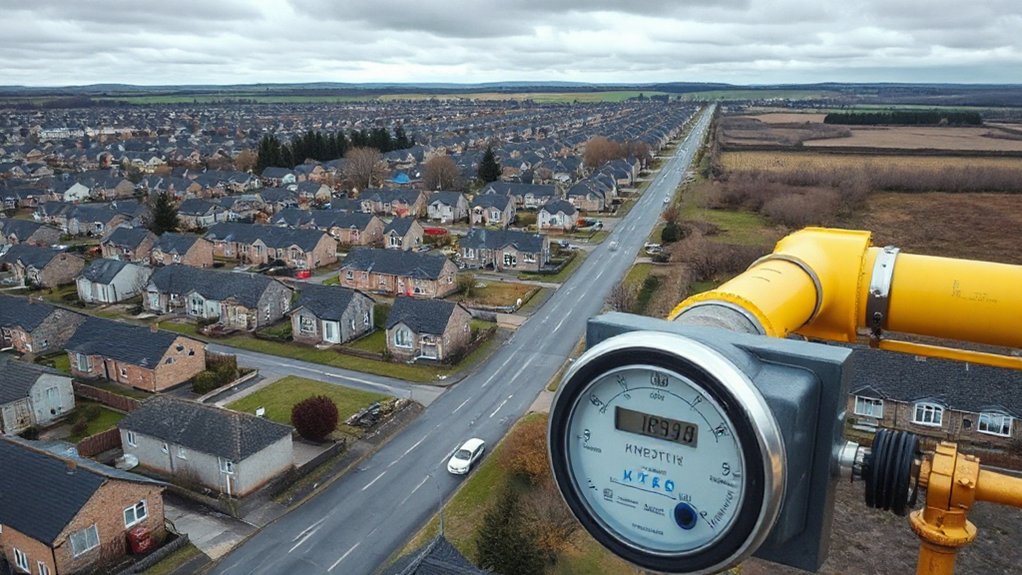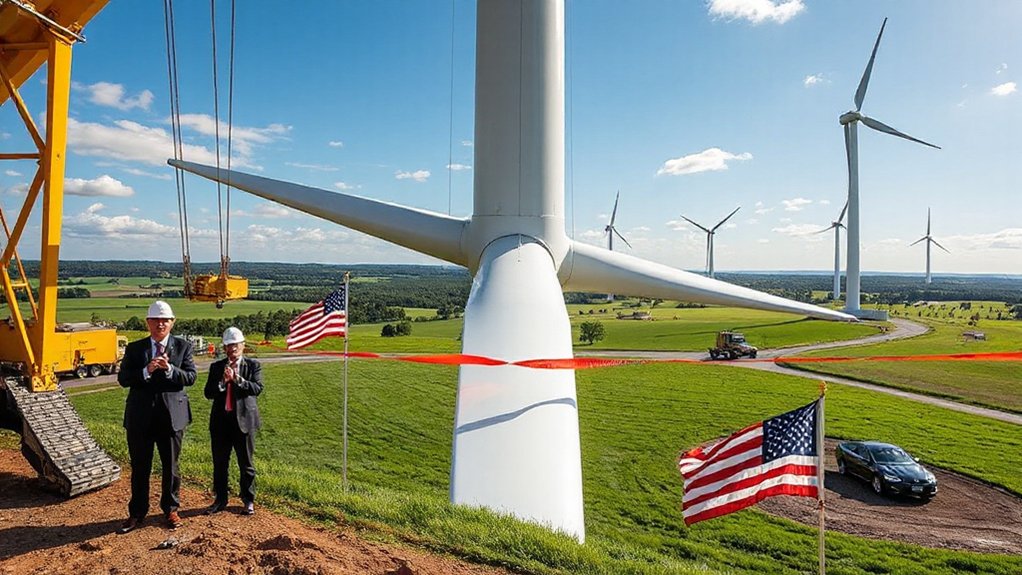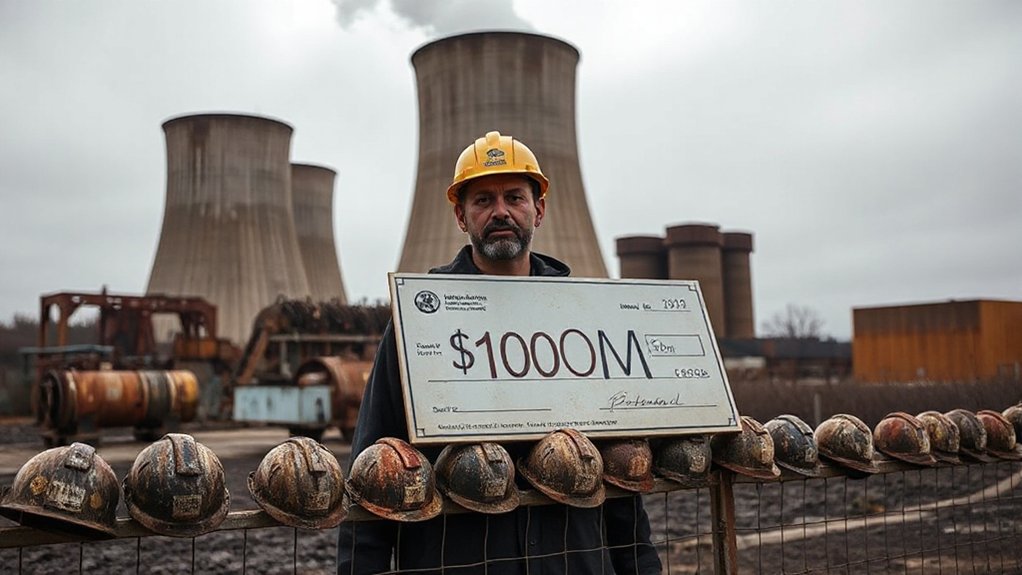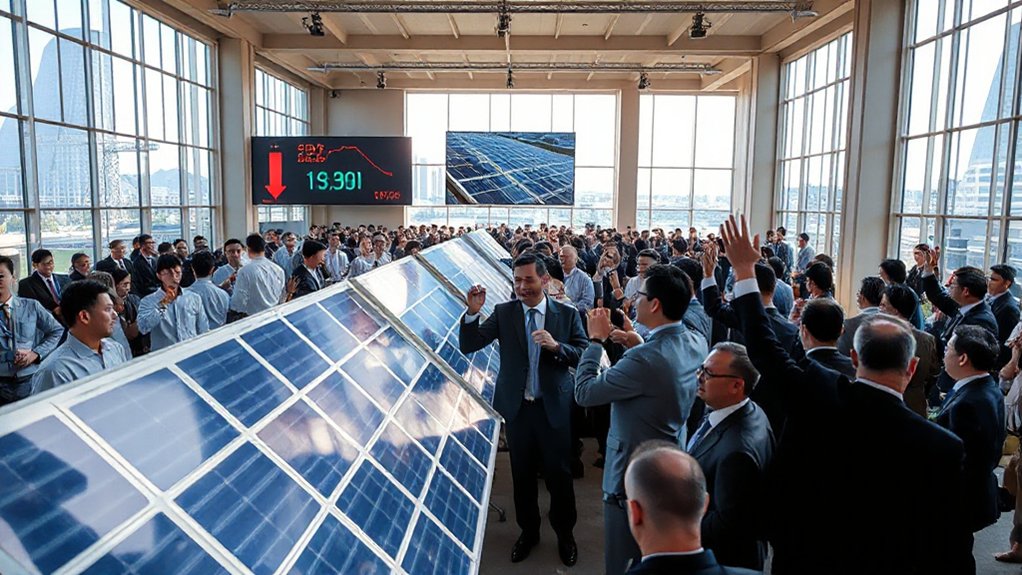California’s bullet train project is cutting carbon before carrying a single passenger. Construction prevented 110,000 pounds of pollutants in 2023, with 570,000 pounds avoided since breaking ground. The controversial project recycles 95% of waste materials and has preserved over 4,400 acres of habitat. Critics call it too expensive and slow, but environmentalists note its long-term potential—142.6 million metric tons of CO2 reduction over 50 years. The numbers tell a different story than the headlines.
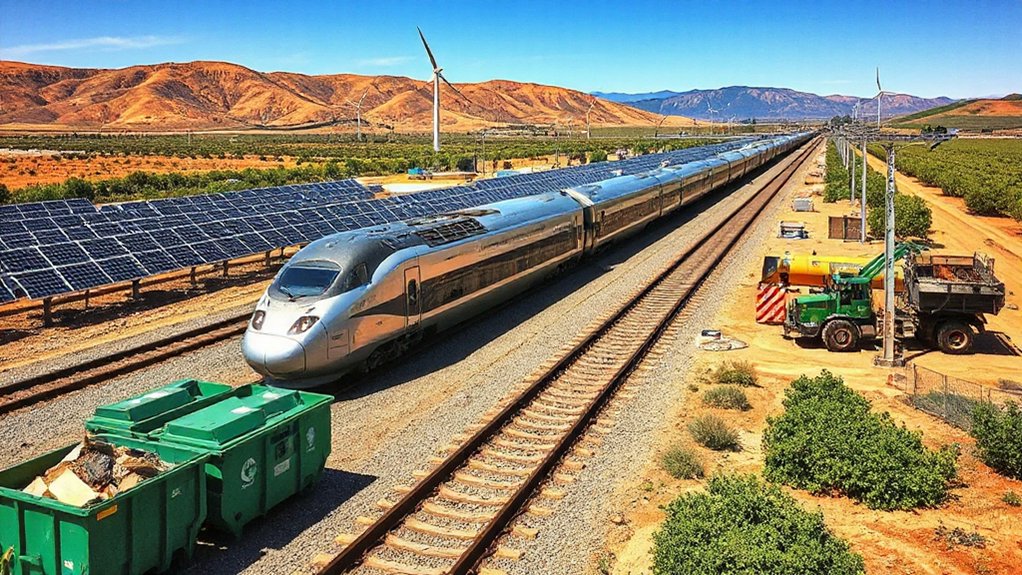
While California’s ambitious bullet train project faces mounting criticism over ballooning costs and delays, its potential impact on carbon reduction remains a compelling bright spot. The numbers don’t lie. Construction has already prevented 110,000 pounds of pollutants in 2023 alone, with over 570,000 pounds avoided since breaking ground. Not too shabby for a train that hasn’t carried a single passenger yet.
This isn’t your grandpa’s railway system. When completed, these sleek trains will zip across the state at 220 mph, powered entirely by renewable energy. Zero emissions. Zero fossil fuels. One hundred percent cleaner than your gas-guzzling road trip to San Francisco.
The construction phase itself has been surprisingly green. Crews have diverted 95% of non-hazardous waste from landfills. That’s 306,159 tons of construction materials recycled or reused out of 323,739 total tons.
California’s bullet train construction defies expectations by diverting an astounding 95% of waste from landfills—over 306,000 tons recycled or reused.
Construction sites aren’t typically known for their environmental friendliness, but this one’s breaking the mold. As the nation’s renewable energy capacity continues to expand rapidly, this project is perfectly positioned to take advantage of cleaner electricity sources. Beyond pollution, the project has preserved more than 4,400 acres of natural habitat and protected 3,400 acres of agricultural land from development. Those farms and forests will keep sequestering carbon while developers look elsewhere. This approach helps combat urban sprawl that’s typically caused by cars and contributes to more walkable, sustainable communities.
Looking ahead, the numbers get even more impressive. Over its first 50 years of operation, the high-speed rail system is projected to avoid up to 142.6 million metric tons of CO2 equivalents. However, with project completion delayed until 2033 or later, these climate benefits won’t help meet urgent near-term emissions targets. That’s according to their Well-to-Wheels emissions methodology, which sounds fancy but basically means they’re counting all the emissions that won’t happen when people choose trains over planes and automobiles.
Let’s be real though—if implemented today, it would reduce statewide greenhouse gas emissions by less than 0.2%. Not exactly earth-shattering. The project has also created economic opportunities, with a 166% increase in small business participation and 191% rise in disadvantaged business enterprises since 2015.
Critics will say it’s too little, too late, too expensive. Maybe. But in a climate crisis, every ton of carbon matters. And this train’s already delivering.
